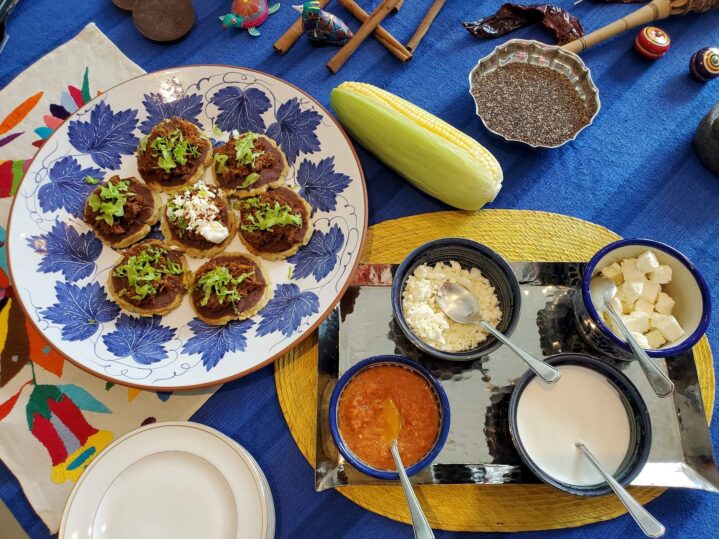
Mexican Cuisine: UNESCO Intangible Cultural Heritage of Humanity
Story by Kathleen Pokrud
Photo by Jenny Chan and Teresa Biesty
Foreword by
H.E. Mr. Bernardo Cordova Tello
Ambassador
The Embassy of the United Mexican States
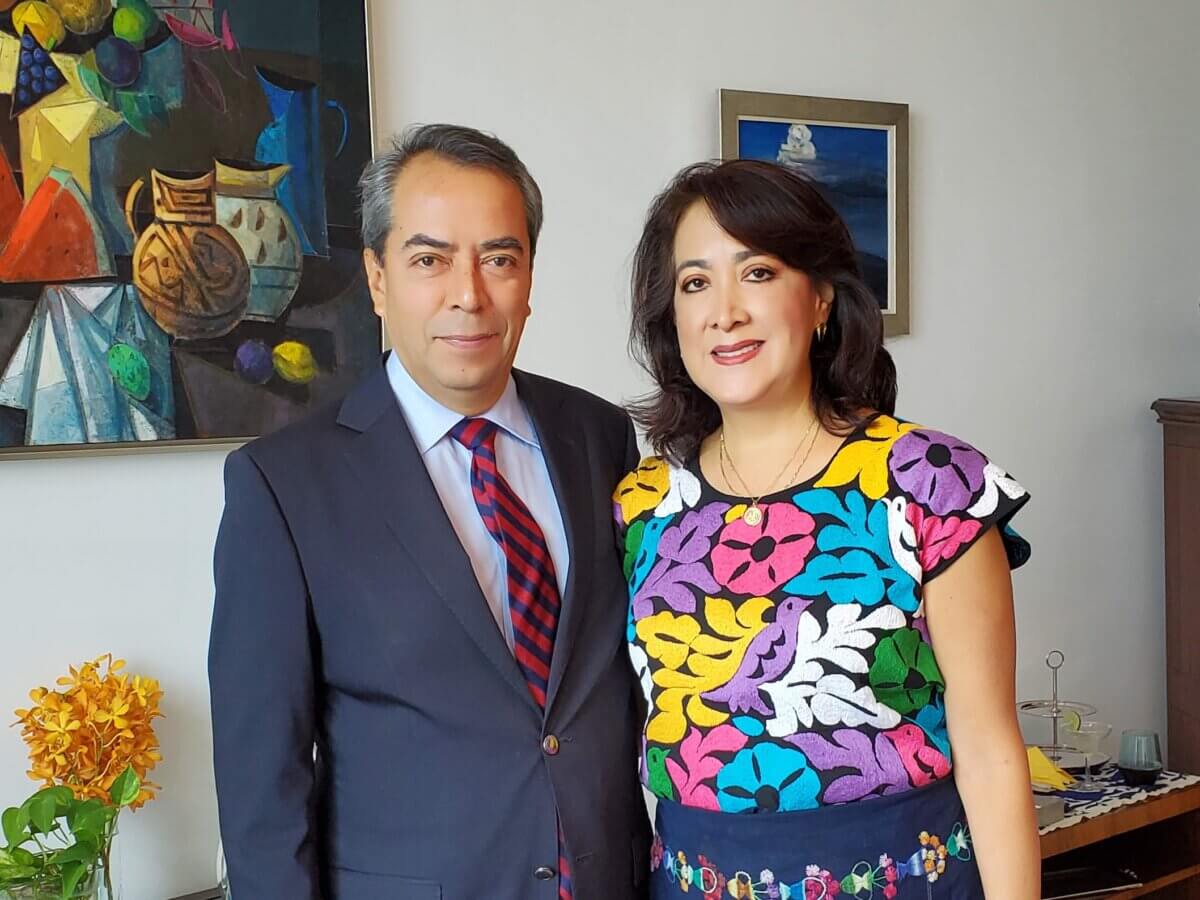
I was delighted when I heard that Kathleen intended to publish an article about Mexican cuisine. To quote the words of Tom Parker Bowles, who, like Anthony Bourdain and other international food critics, have expressed their passion for Mexican food. Tom pointed out years ago that “the most exciting, vibrant, captivating and seductive food that exists on earth” is Mexican food, which “has conquered the world, not only with its dishes, but with the passion, creativity, warmth and the love for life that their creators stamp on the dishes”.
This British food critic stated that he considers Mexico as “one of the most diverse, beautiful and kind countries in the world; for its people, its land, its love.” Regarding some negative news broadcasted by some international media, Parker pointed out that: “Mexico is a pure, generous and hospitable land; anyone who loves this country is able to see beyond the problems”
Story by Kathleen Pokrud
Do you know that Mexican food is officially considered a cultural heritage of humanity? In 2010, UNESCO (the United Nations Educational, Scientific and Cultural Organisation) inscribed Mexican cuisine on their Representative List of the Intangible Cultural Heritage of Humanity. I sat down with Madame Adriana Mendez Murguia from The Embassy of the United Mexican States to learn how Mexican gastronomy was enriched over the years.
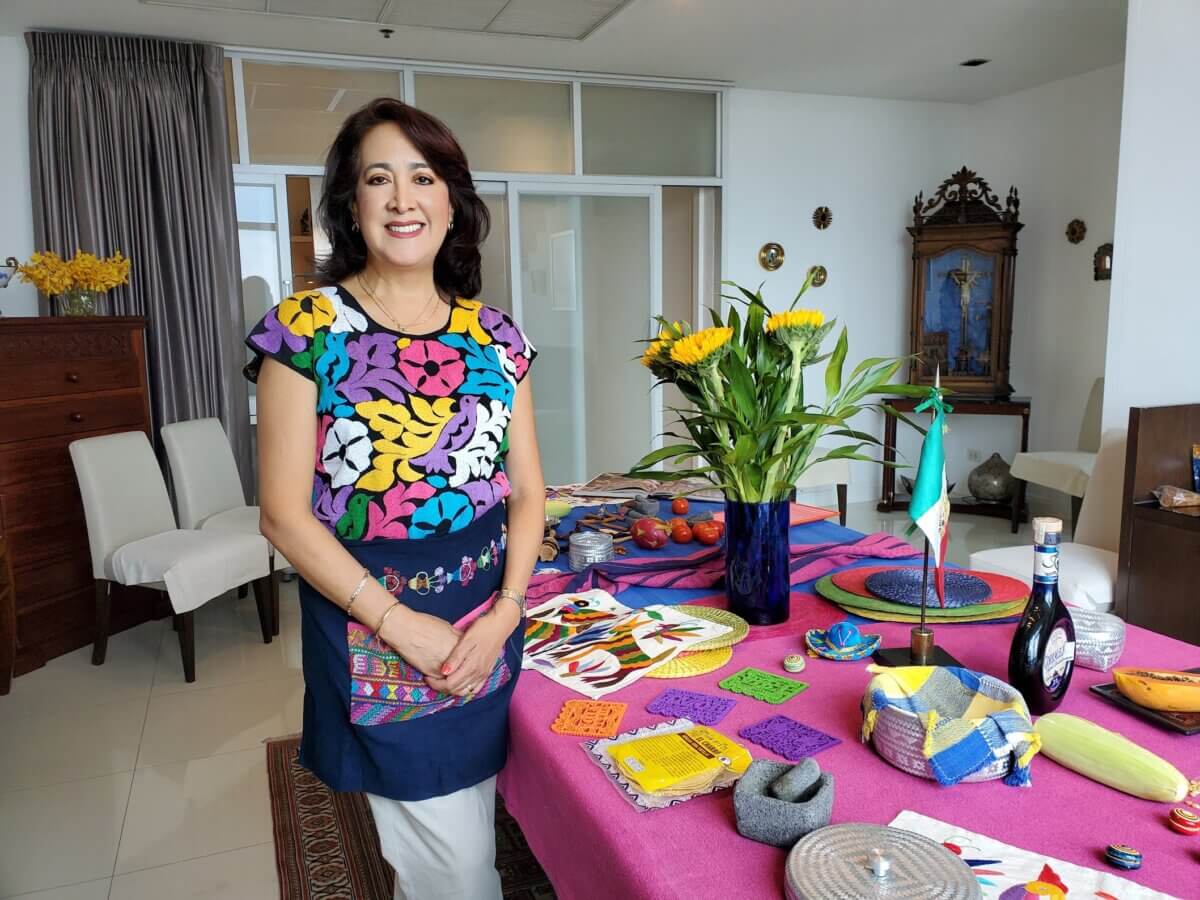
To summarise Mexican gastronomy in two lines, many would agree that it was born in the entrails of the country over thousands of years and has become into something that is widely appreciated all over the world, and there are many proofs of that. From Diana Kennedy’s books to Anthony Bourdain’s letters and shows, to Netflix series featuring Mexican food. Experts estimate that about 15% of the food ingredients that are used in the world are originally from Mexico. Which is quite impressive!
Madame Adriana described the history of Mexico cuisine, “Our traditional cuisine is a comprehensive cultural model comprising farming, ritual practices, age old skills, culinary techniques and ancestral community customs and manners. It is made possible by collective participation in the entire traditional food chain: from planting and harvesting to cooking and eating. The basis of the system is based on corn, beans and chilli; unique farming methods such as “milpas” (rotating swidden fields of corn and other crops) and “chinampas” (manmade farming islets in lake areas); cooking process such as nixtamalization (lime hulling maize, which increases its nutritional value); and singular utensils including grinding stones and stone mortars. Native ingredients include varieties of tomatoes, pumpkins, avocados, cocoa and vanilla provides variety to the basic staples.”
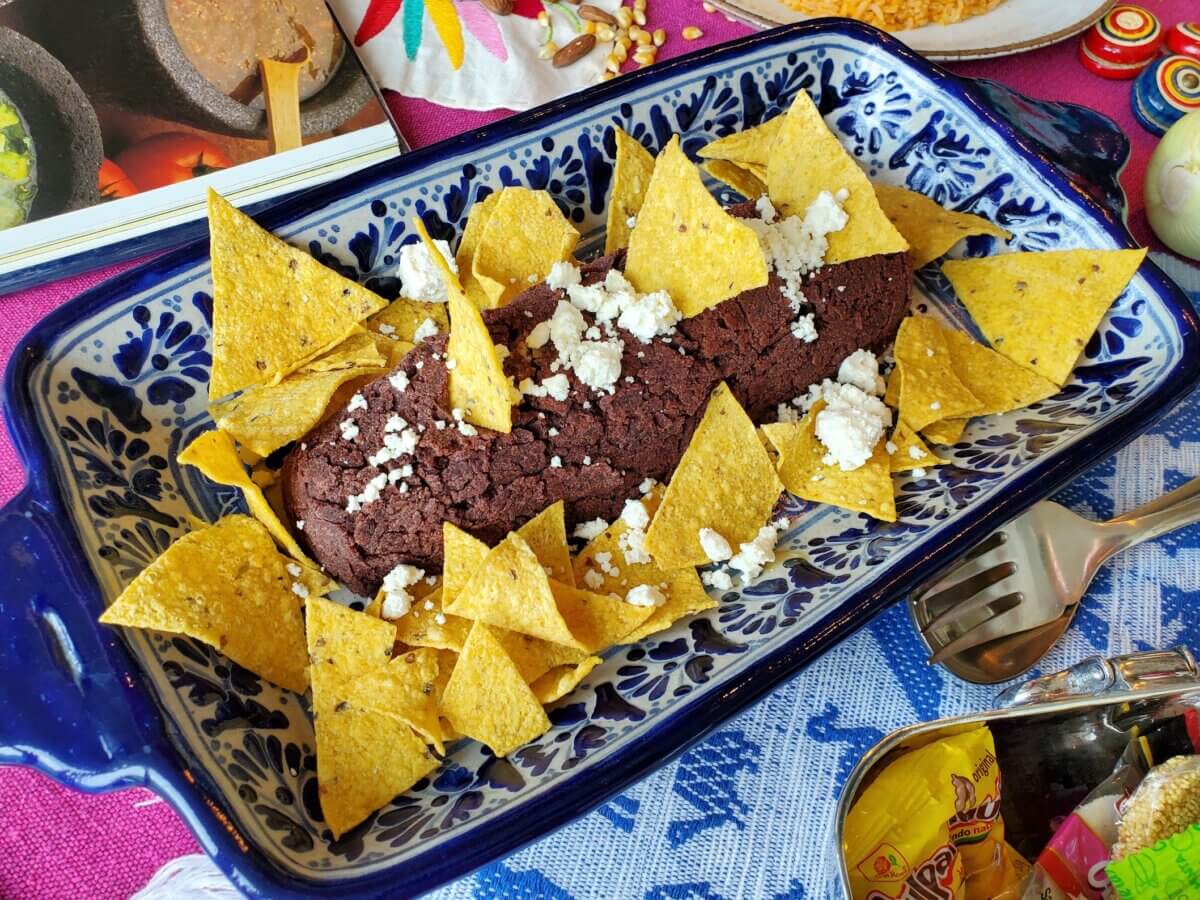
She further explained, “Aside from the ingredients previously mentioned, there is wider variety of that ingredients are originally from Mexico; such as turkey, papaya; pitaya (widely known outside of Mexico as dragonfruit), chia seeds, a wide variety of chilli’s, agave from which tequila and mezcal are made, nopal (cactus) and its fruit called tuna, beans and corn, amaranth, green beans, jicama and squash.”
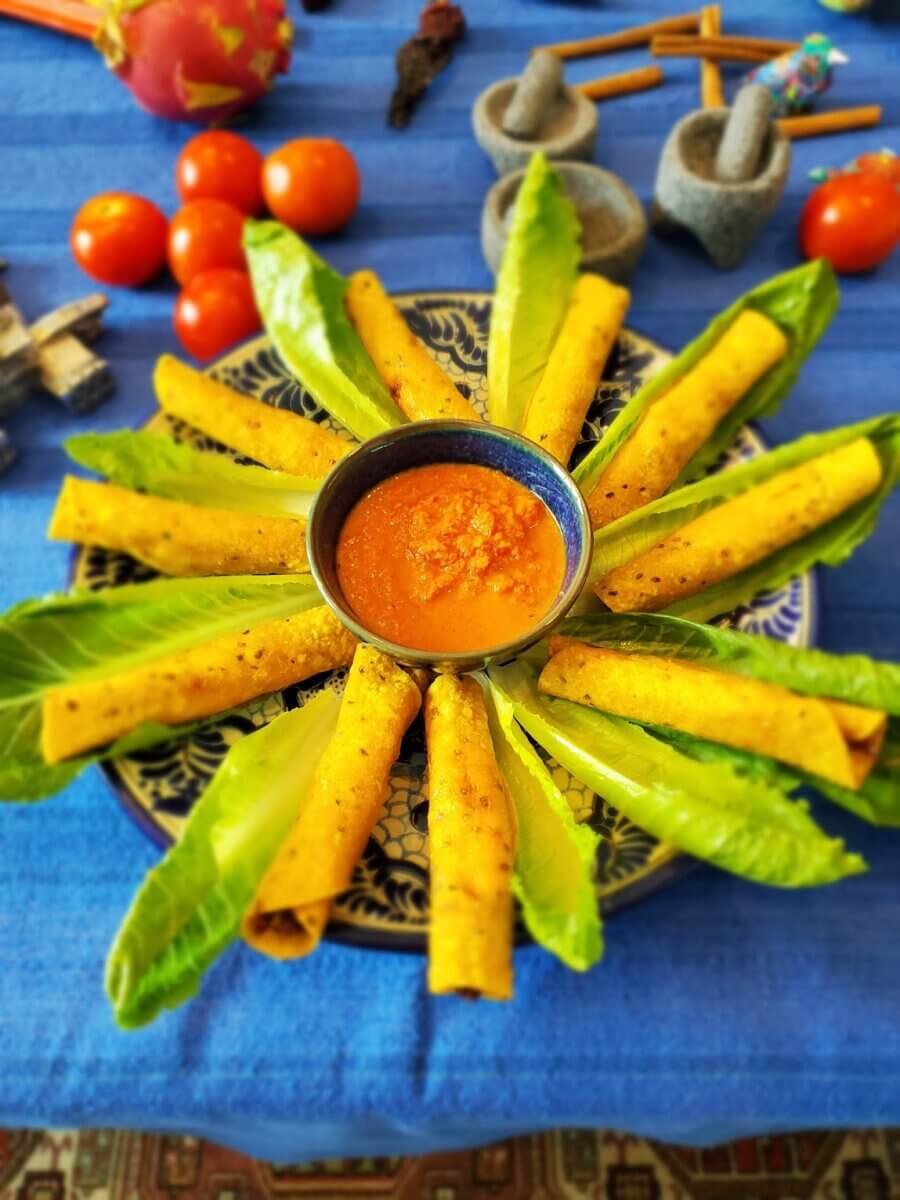
Madame Adriana proudly remarked, “To this natural wealth, it is important to include the different influences Mexican gastronomy received over time, especially from Europe and the Middle East. First, from Spain for 300 years, and in the 19th century there was a strong French and Austrian culinary influence from the empire of Maximilian of Habsburg. Thanks to this influences and fusion, Mexican gastronomy was enriched even more. It was a slow and progressive process that culminated by the end of the 20th century when UNESCO recognised Mexico’s cuisine as intangible cultural heritage of humanity. UNESCO first registered our Mexican cuisine in 2010, even before the French cuisine, which was added to the list in 2012, followed by the Mediterranean and Japanese, both in 2013. According to world popular rankings, Mexican cuisine is among the top five most popular and prestigious cuisines in the world, along with the French, Chinese, Japanese and Indian ones.”
Mexican food and its culture are unique according to Madame Adriana, “Although many of our dishes are based on the traditions of ancient cultures and peoples (Aztecs, Mayans, Tarascans, etc.), they also have contributions from Mediterranean and European cultures, incorporated during the colonial era. These processes have been further enriched by influences from the Middle East and Asia over the years. Precisely, these mixed influences make Mexican gastronomy a clear reflection of the country’s culture. Thus, Mexican food, aside from being delicious, unique, colourful and highly valued internationally, is the product of the history and culture of Mexico.”
To underline an important fact, “Our gastronomy is product of a millenary culture and of the historical continuity and additions to ancient traditions. It also plays an important role as an element of identity for the Mexican people. Mexican food is collectively produced, is based on products originating from a very diverse land and boasts great creativity in its chefs, who over the centuries have been perfecting our gastronomy. It is a very balanced and healthy diet that for millennia has nourished the Mexican people.”
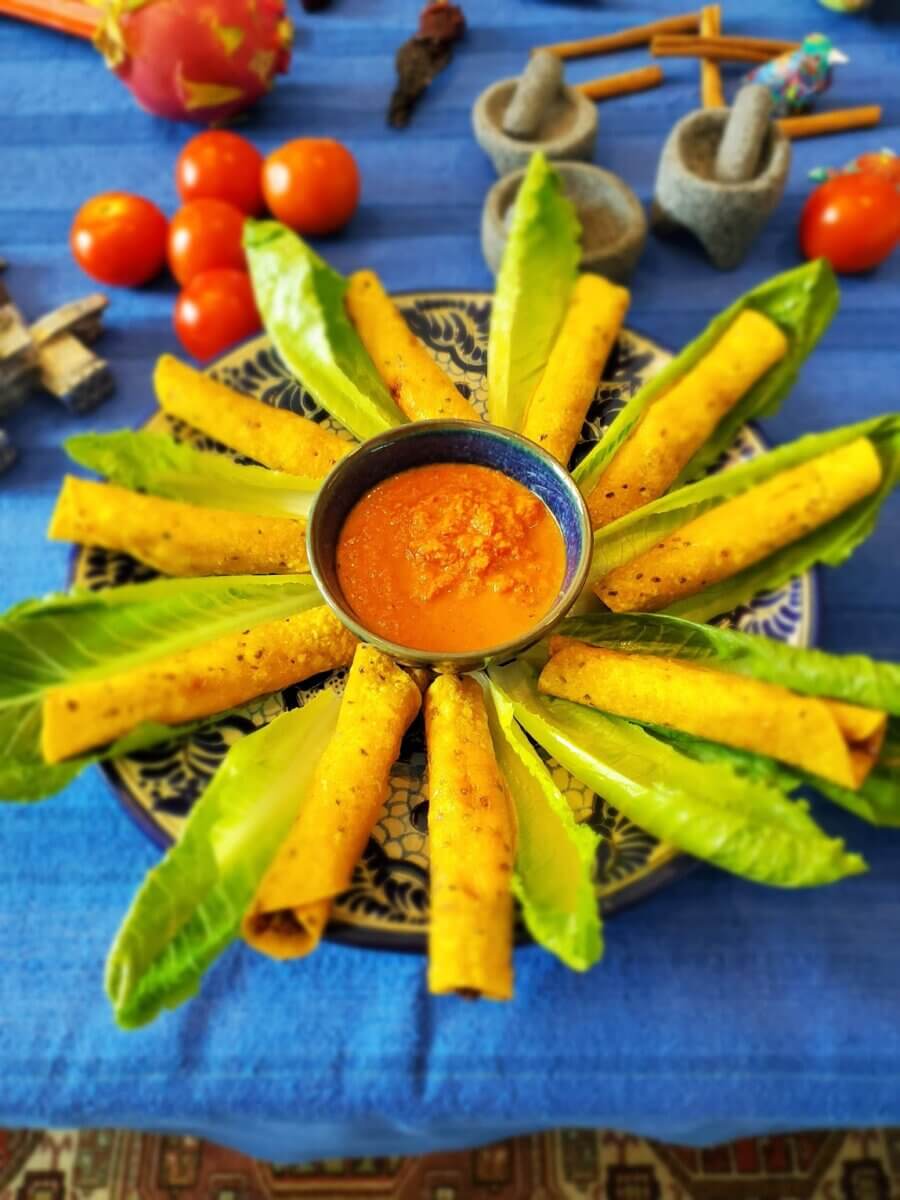

With the long traditional culinary history of Mexican story, I asked Madame Adriana on how Mexican food is influenced by. She replied, “From my personal point of view, there are two main elements to consider to evaluate a national gastronomy. The first set of elements is given by nature. Mexico is one of the most mega-diverse countries in the world, with more than 10,000 kilometres of coastline, tropical regions, arid zones, deserts, mountains, some of them with snow, large forests and valleys. On the other hand, Mexico is the cradle of great ancient civilisations: Olmecs, Teotihuacans, Purepechas or Tarascans, Zapotecs, Mayans and Aztecs, amongst many others.”
She elaborated further, “These two characteristics allow Mexico to have a great cultural and culinary diversity, but with common central elements in its gastronomy such as the central use of corn, tomato, chocolate, turkey, avocado and a wide variety of vegetables, seeds, fruits, fish and shellfish. Even some native flowers are used in the preparation of certain dishes.”
“Added to this natural and historical wealth, there is the influence that came from Europe and the Mediterranean throughout the centuries, including even influences from Asia thanks to the contributions received by the Acapulco Galleon, which operated for more than 200 years between the centuries XVI and XIX. Thanks to the sea route from Asia, spices, several kinds of fruits and rice arrived, which are now part of the daily diet of Mexicans. Likewise, Mexican contributions such as papaya, pitaya, chillies, tomato, avocado, chocolate and flowers such as cempasuchil (marigold) and poinsettia arrived to Asia.”
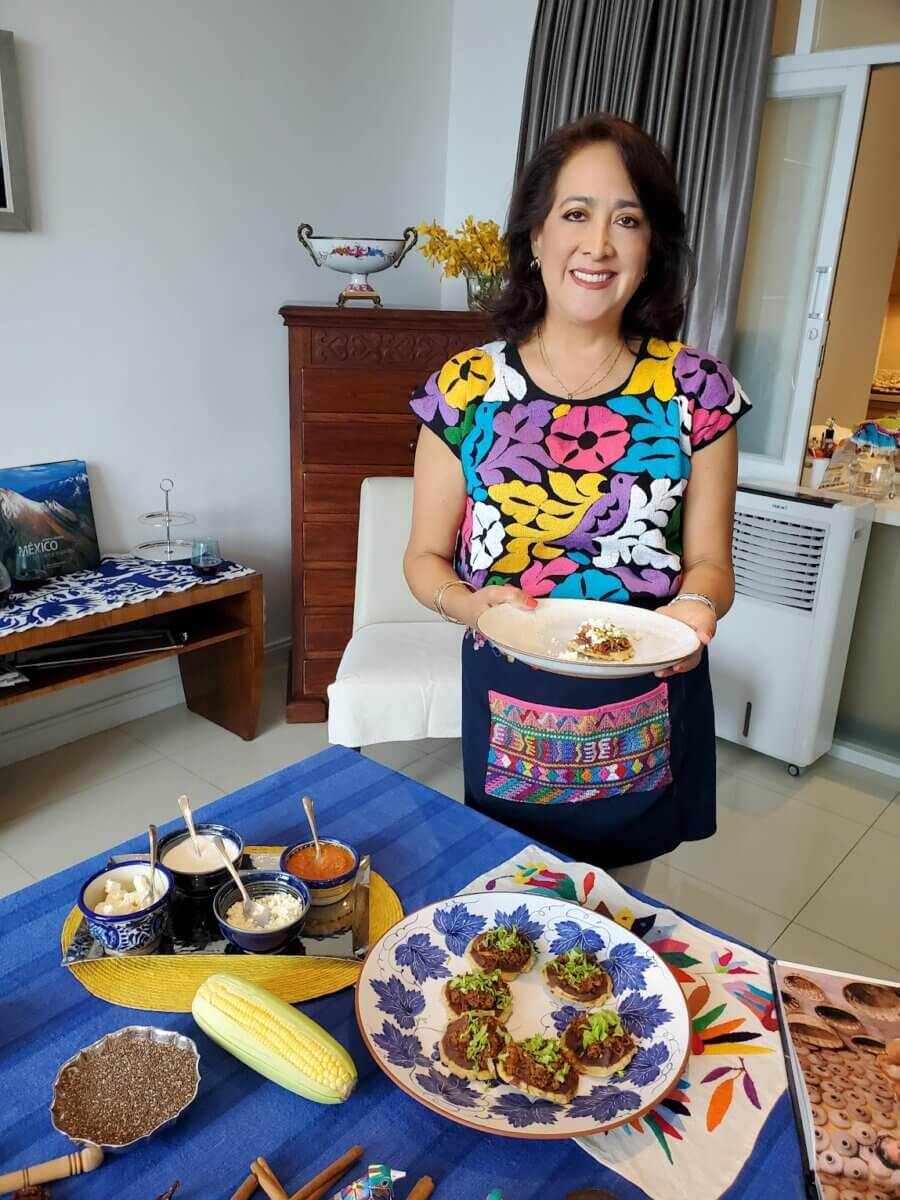
Key representative dishes
The list is a very long one, given the diversity and complexity of Mexican food. On the Mexican coasts, fish, shellfish and a great variety of “ceviches” (raw fish) stand out. The ceviche is also typical of various Latin American countries with coast to the Pacific.
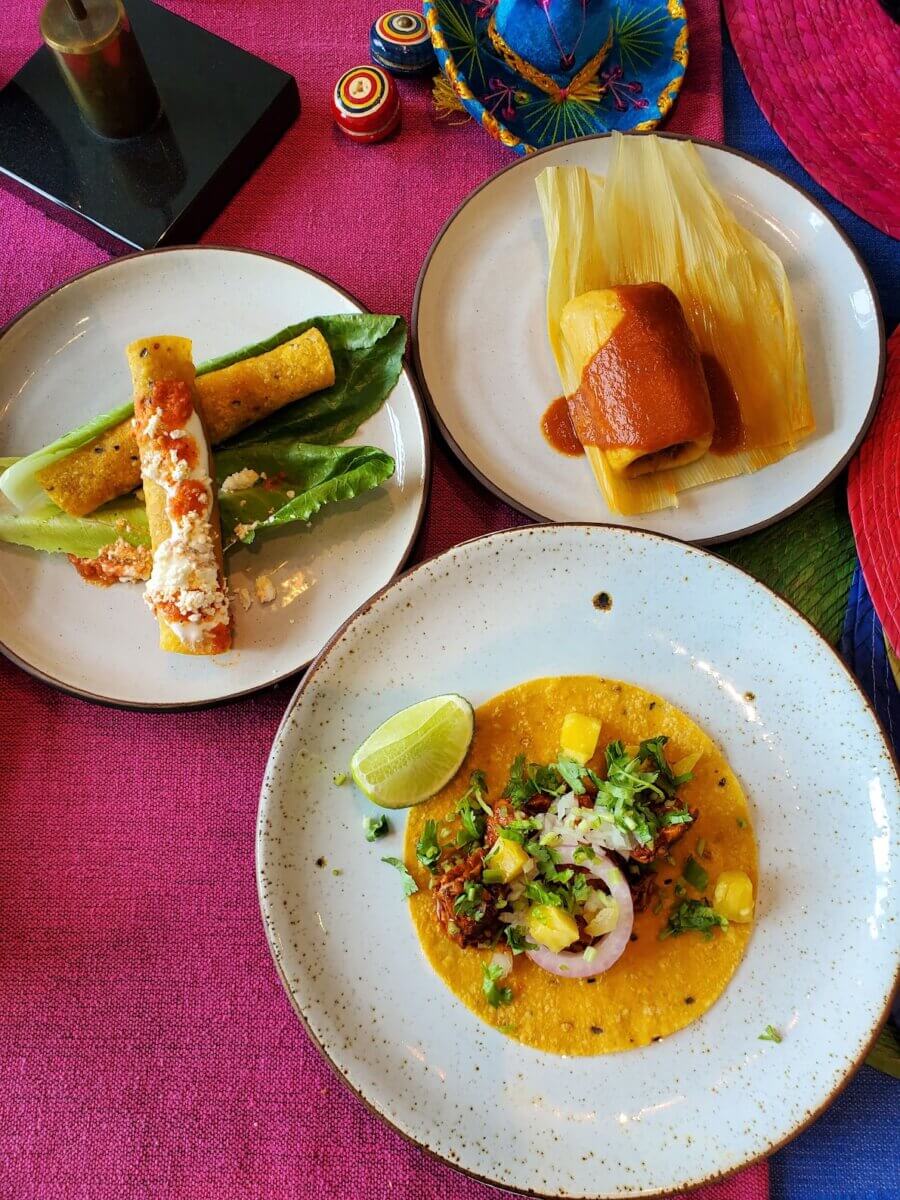
In the central part of Mexico, “mole” is very common. Mole is a very complex sauce, which can include 20 or 30 ingredients, and it can take days or weeks to prepare. It is the dish that is used for great celebrations or special occasions.
In the North, the popular dishes are “cabrito” (baby goat) and different kinds of “barbacoas” (lamb meat wrapped in agave leaves and cooked underground on low heat overnight), which is a very typical dish to have on Saturdays or Sundays.
The country has an extensive variety of soups, salads and stews, even their fast food is also well known in the world, mainly meat tacos, which can be filled with beef, pork, lamb, chicken or even fish.

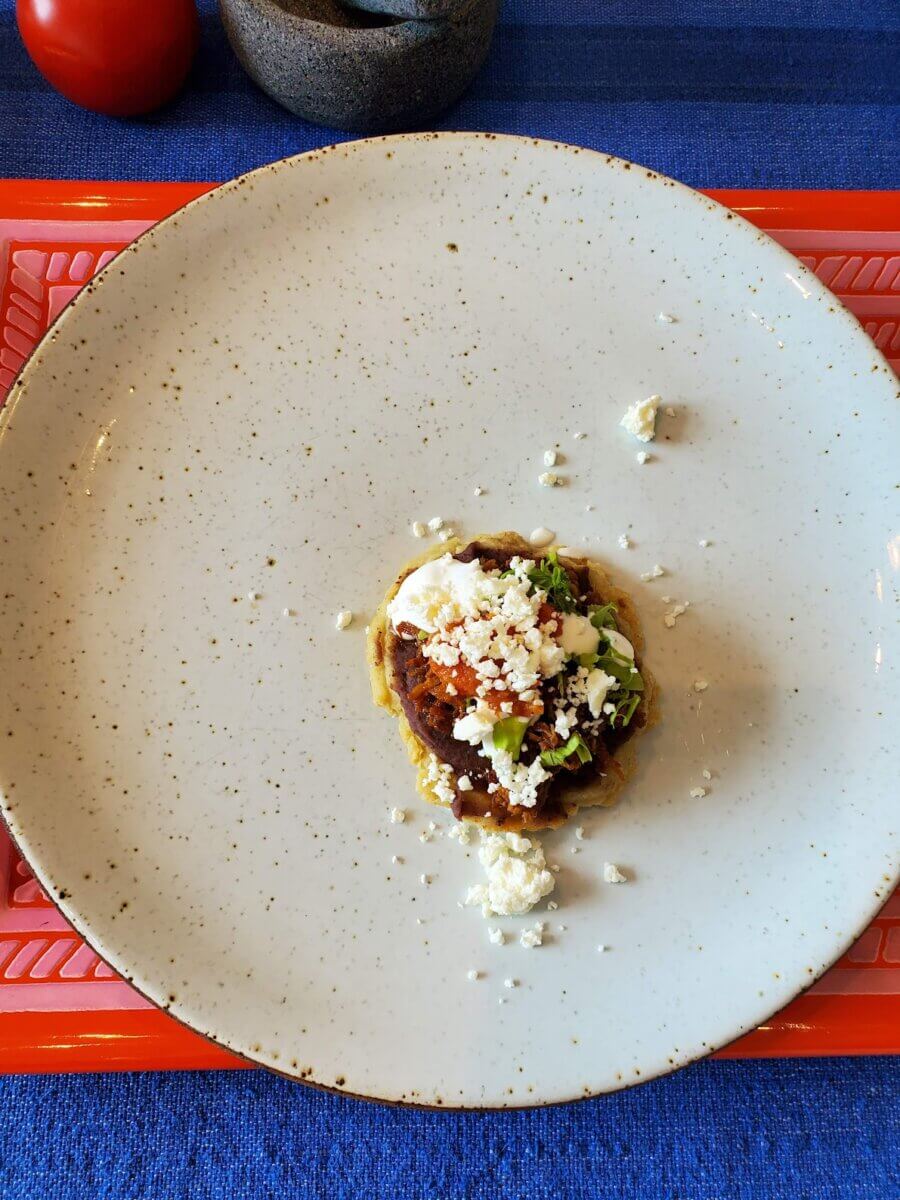
There are extensive selection of dairy based dishes, with a wide variety of cheeses, milk and sour cream. No doubt the dairy products guarantee tasty desserts, and with heavy influences from Spain, France and Austria, are also delicious and diverse.
In addition, there are excellent fruit liqueurs produced in Mexico. Mexico produces quality red and white wines, aside to the world famous tequila, mezcal, as well as beer.
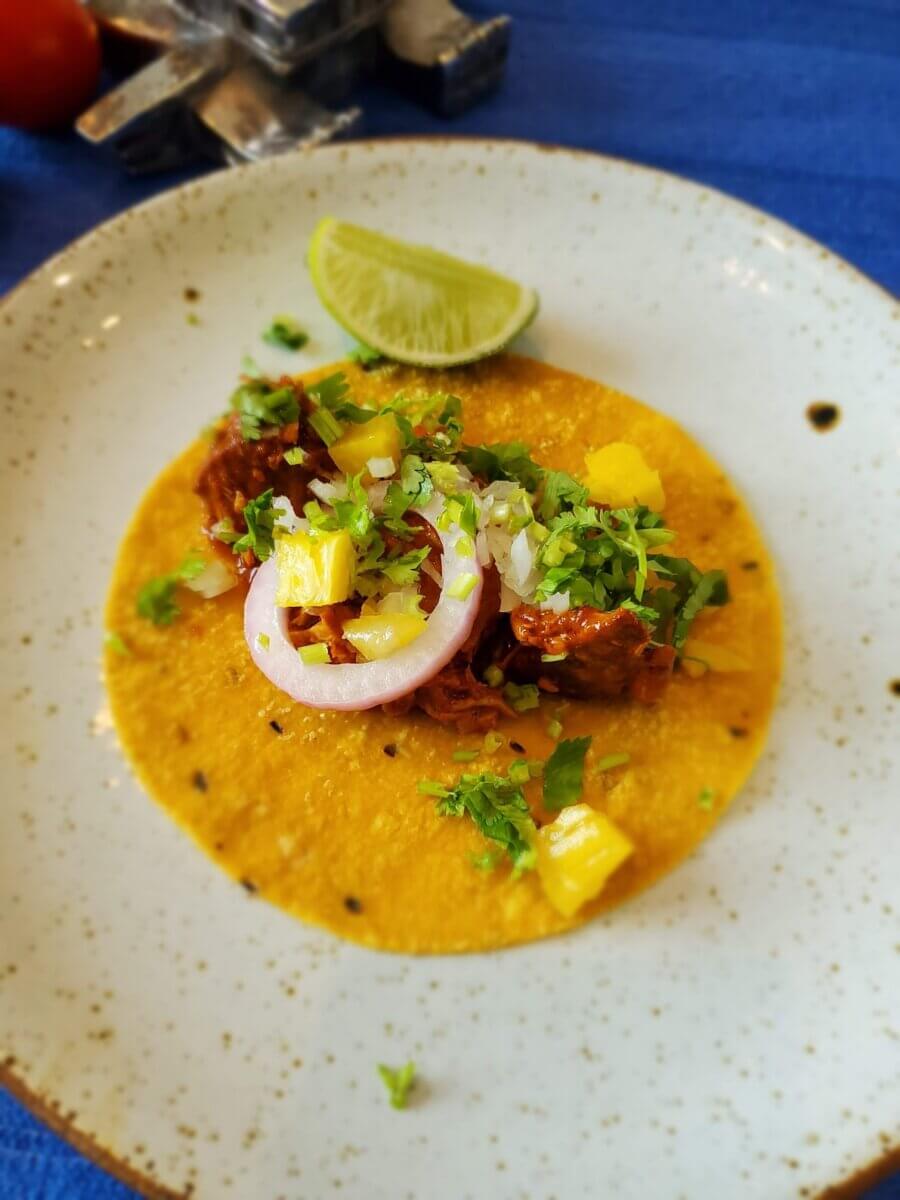
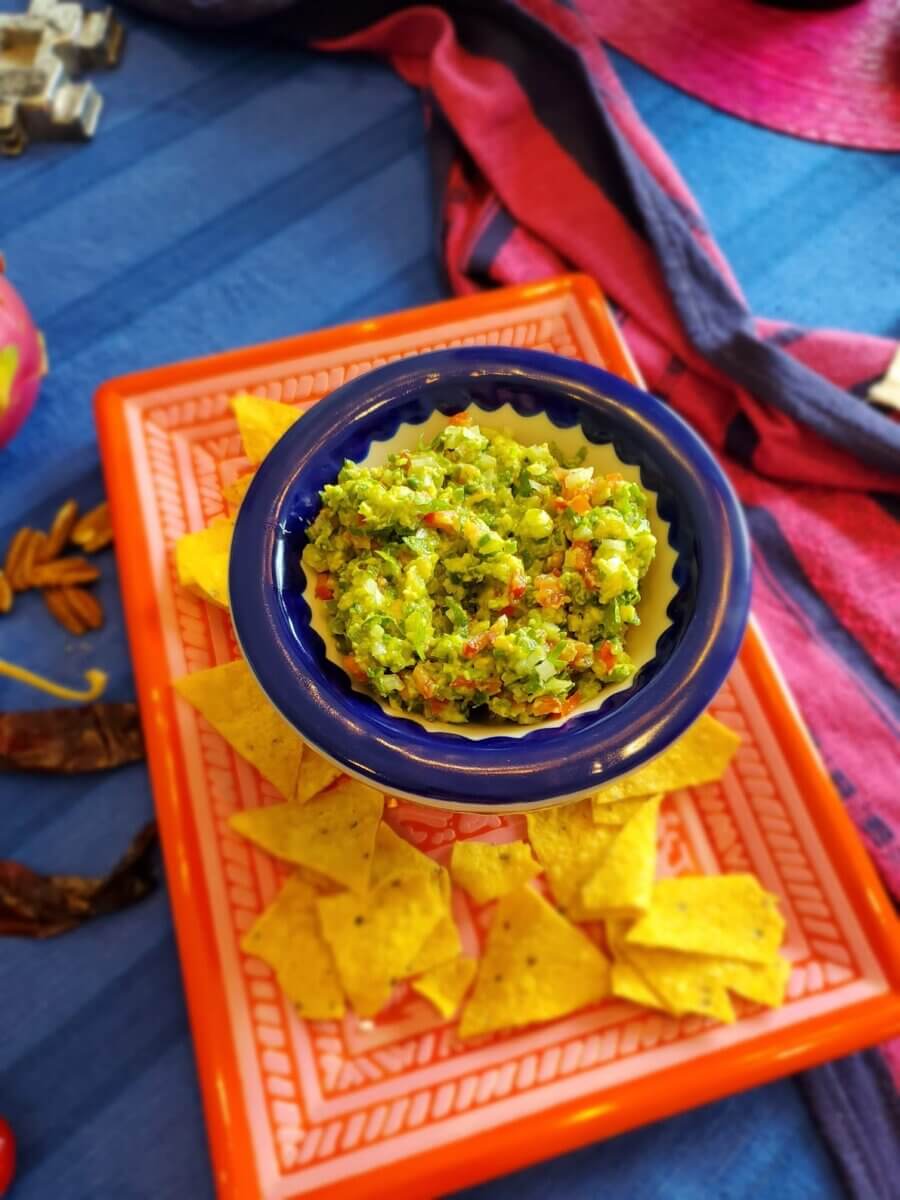
Gastronomy, like any other cultural activity, is not something static; it evolves over time and through contact with other influences from other regions of the world. This tradition is the heritage of past civilisations, a culture inherited and transmitted from generation to generation that gives its own identity to each region of the country, making up the cultural mosaic that is Mexico.
Madame Adriana admitted, “Mexican cuisine is ancient and diverse due to its great wealth and geographic diversity. This tradition merges and is further enriched with the arrival of the Spaniards to Mexico. New products and spices are incorporated, and form a wide variety on which the “Criolla” (Creole) cuisine was established, that is, the fusion of both cultures. By the late 19th century, the elaboration of a more sophisticated food promoted by the government and the elites took hold. Good cooks were hired and even Italian and French chefs were hired in Mexico to teach new dishes and cooking techniques, which were incorporated into the Mexican cuisine. The growth of large cities in Mexico throughout the 20th century, and the arrival of international tourism generated the opening of hotels and large restaurants. This generated interest and taste for good Mexican cuisine, which has become one of the main tourist attractions in the country, because international tourists have been able to discover the richness and diversity of Mexican cuisine, which is delicious and unique.”




